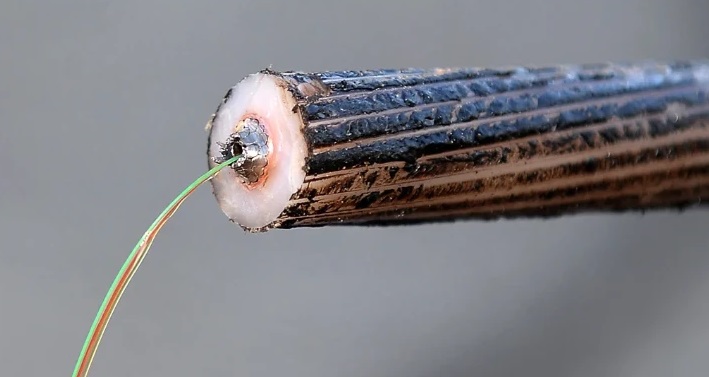how the ancient Egyptians managed to move such heavy stones to such a place when there was no crane and no stone in the surrounding area. A vehicle carrying such heavy stones!? Have scientists discovered the answer now? At least that’s what the new one is hoping for
Yes, scientists have now discovered a buried branch of the Nile near these pyramids in Giza, Egypt. It is believed that the Nile River used to pass through here centuries ago and possibly through this channel the ancient Egyptians would have moved heavy building blocks from one place to another.
Scientists believe they have solved the mystery of how the 31 large stones of the Egyptian pyramids were moved 4,000 years ago. A research team from the University of North Carolina Wilmington discovered that the pyramids were built along a long-lost, ancient branch of the Nile River, now hidden beneath desert and farmland.
A research report about this has been published in the journal ‘Nature Communications Earth and Environment’ in mid-May.
According to experts, this branch of the river also shows why these pyramids were built in a particular row between 3700 and 4700 years ago. Experts say that then due to the presence of the river, it was a green area and there was no desert like today.
It should be noted that this is the only intact wonder among the Seven Wonders of the Ancient World, which includes the pyramids of the Egyptian pharaohs Kaffray, Chiapas and Macrino.
For centuries, scholars have wondered how the pyramid’s large blocks were moved during construction, says Iman Ghanim, of the University of North Carolina at Wilmington in the US and the study’s lead researcher. Even before the discovery of this buried branch of the Nile, archaeologists have long believed that a watercourse must have passed near the pyramids, which the ancient Egyptians used to transport building materials. What will be used?
However, according to Iman Ghanim, “no one knew the exact location of this great watercourse, nor did they have accurate information about its shape, size or proximity.”
An international team of researchers also used radar satellite imagery to explore the river course. Through these special radars, river structures were discovered within the sand.
According to the research published in the journal Communications Earth and Environment, the presence of a buried branch of the Nile River under the sand near the pyramids has been confirmed.
According to the researchers, this part of the Nile River dried up and was buried under the sand due to a severe drought in Egypt probably 4,200 years ago.
This hidden branch of the Nile also provides a good lesson when considering many aspects of geography. A lot has changed over the millennia, and things may look very different today than they did back then. This applies to everything such as waterways, or the presence of cities, and even the amount and type of vegetation in an area where small differences in climate can have a significant effect on wild and cultivated plants. There is a lot of evidence waiting to be discovered beneath the surface in many areas.
Mapping the Hidden River
Using satellite images, historical maps, geophysical surveys, and sediment analysis, researchers were able to map a former branch of the Nile River, which they believe was thousands of years old. A major drought and sandstorm buried it years ago.
Emma Ghanim said the team used radar technology to “penetrate the surface of the sand and create images of hidden features” such as “buried rivers and ancient structures” running at the foot of “ancient Egyptian pyramids”. “The majority is located.”
The discovery of a branch of this ancient river helps explain the many pyramids located between the Giza complex and the Middle Kingdom site of Lishit, now an inhospitable area of the Sahara desert.
Dr. Susan Einstein, one of the co-authors of the study, said: “Finding a real branch and having data that shows that there is a waterway that has been blocked by heavy blocks, equipment, people, everything. can be used to transport objects, really helps us explain the construction of the pyramids.”
Sections of the extinct channel, named the Ahramat Branch after the Arabic word for pyramid, were discovered in the foothills of the Western Desert Plateau. The branch of the river measured 650 – 2,300 feet wide and about 39 miles long, terminating at the shrines of the valley.
Einstein said the size of the river branch and its proximity to the pyramid complex suggests that the waterway was active and active during the pyramids’ construction phase, a 1,000-year period that began about 4,700 years ago. were built in Ancient Egyptians could use river energy instead of human labor to lift these heavy blocks.
Mysterious underground structure
On May 5, researchers from Egypt’s National Research Institute of Astronomy and Geophysics, as well as Japan’s Higashi Nippon International University and Tohoku University, reported another recent discovery of a mysterious hidden structure near the Giza Pyramids. This report was published in Archaeological Prospectus.
In the cemetery next to the Great Pyramid of Khufu, archaeologists scanned the surface with ground-penetrating technology to find an unusual, “empty area” underground. The area is L-shaped and measures about 33 x is 49 feet.
Using Electrical Resistivity Tomography (ERT) and Ground Penetrating Radar (GPR), the researchers mapped the area and hypothesized that there was a superstructure where “maybe vertical walls of limestone or shafts.” Then below that, another space between 15 and 30 feet underground.
The surface area is mostly flat ground covered with sand and no visible structures. “There are no significant remains above ground in this area, but is there really nothing underground?” “No underground investigations have been done before,” the team asked in its report.
Archaeologists believe there may be a tomb underneath, although they stress that “more detailed surveys will be needed to confirm this possibility.” More research will be needed to know the true significance of the unusual location.
Egypt has one of the longest histories of any country in the world and its secrets are still being unraveled today. Centuries after Egypt’s first pyramids were built, excavation sites continue to make discoveries.
“Finding the pyramid branch is important not only for our understanding of why pyramids were built in these particular geographic areas, but also for understanding how pyramids were accessed and built by ancient populations,” the study authors said. “How was it done?”
This discovery reiterates the importance of the Nile River as a highway and lifeline to the ancient Egyptians. The study also sheds light on how human society has been affected by climate change in the past.
Archeological excavations are being prioritized to locate more extinct Nile routes and further research will be conducted to see what lies beneath the surface of the Giza complex, all to learn more and In an effort to help preserve Egyptian cultural heritage.
Note: Preparation of this feature was supported by articles published in Nature Communications Earth and Environment, Patterns of Evidence and DW. Translation and arrangement





